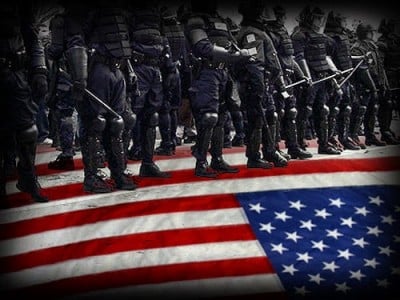New SWAT Documents Detail the Brutal Reality of U.S. Police Militarization

The NEMLEC, or Northeastern Massachusetts Law Enforcement Council, encompasses multiple SWAT teams across that region of the state. According to the documents it tried to suppress, NEMLEC conducted 79 SWAT raids from August 2012 to June 2014. Though the NEMLEC (along with SWAT teams around the country) claims SWAT teams are only used for “active shooters, armed barricaded subjects, hostage takers, and terrorists,” the data reveals a different story.
Though the NEMLEC touts its operations as reserved for “critical” situations, only one of the 79 incidents actually involved a terrorist attack: SWAT teams were deployed to assist in the aftermath of the 2013 Boston Marathon bombing. In that same 2012 to 2014 time period, there were noactive shooter situations, no hostage situations, and only 10 cases of barricaded subjects.
According to The Intercept, half of the remaining cases were for everyday policing activities, including “executing warrants, dealing with expected rioting after a 2013 Red Sox World Series game, and providing security for a Dalai Lama lecture.”
That leaves 37 of 79 raids that were either drug-related, initiated by local police, or responses to suicidal individuals. The use of SWAT teams for drug raids has been widely criticized as superfluous and outside the duties of SWAT. Professor Pete Kraska of Eastern Kentucky University, who specializes in police militarization, told The Intercept that
“It is really significant to remember that SWAT teams prior to the 1980s drug war were confined strictly to reactive, dangerous situations,…But in our research today we find that over 80 percent of the time police departments are using SWAT teams for proactive cases. These deployments are generally targeted at low-level drug dealers … and usually they’re just doing it for collecting evidence — not necessarily to even arrest a well-known, armed, dangerous drug dealer.”
Of the 21 drug raids conducted, only 5 yielded actual contraband, according to the NEMLEC reports. They averaged 36 officers and more than half were conducted in the middle of the night, while 14 were granted judicial authorization for “no knock” entry—meaning SWAT agents were allowed to break the door open to enter. These methods are exceptionally controversial and have resulted in countless cases of needless violence, injury, and death—for both subjects of raids and the officers themselves.
Further, other uses of SWAT teams are unwise at best and dangerous at worst. Associate Professor of Criminology at Merrimack College, Tom Nolan, said, “It’s certainly counter-productive to have a fully-armed militarized SWAT team respond to potentially suicidal suspects who are looking for ways out like suicide-by-cop situations…I don’t know why you couldn’t just have someone respond who knows negotiation strategy techniques, without the tanks and the body armor.” Nolan is also a former lieutenant with the Boston Police Department.
Additionally, while SWAT teams often stress the extreme dangers of their jobs, of the 33 search or arrest warrant raids conducted from 2012-2014, only four encountered firearms—calling into question the justification for such massive police operations.
In one case, a disabled man in a wheelchair was accused of shooting at a woman’s car over a parking space dispute. A 28-person SWAT team was called to his home, bringing along with it a Bearcat (armored vehicle) as well as “tasers, long arms, a shotgun, 40mm less-lethal rounds, shields and battering rams.” When they were let into the man’s home by someone he knew, they found him struggling to get out of bed and gave him “the opportunity to get dressed and remove his catheter.”
The ACLU report confirms past analyses that indicate police militarization and SWAT teams are too heavily armed, too easily enabled, and all but exempt from accountability.
No comments:
Post a Comment